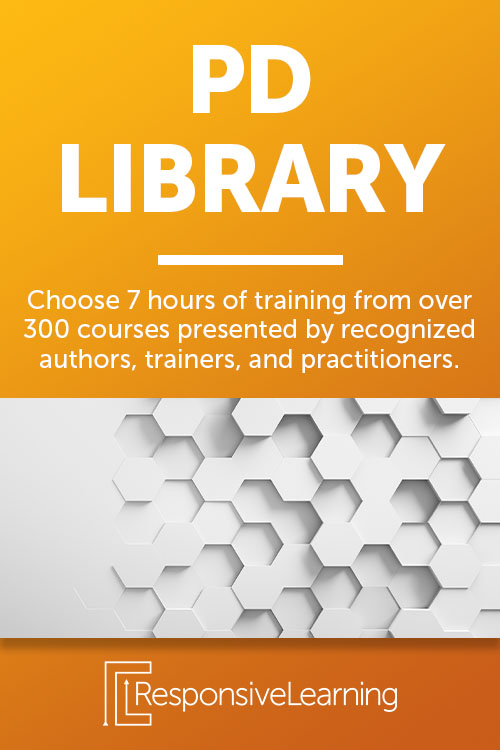Leading a successful special education program requires a strong understanding of the unique needs of students with disabilities, as well as effective strategies for meeting those needs. It also requires strong leadership skills and the ability to collaborate with a diverse group of stakeholders, including teachers, parents, and community members. You may find yourself asking how to lead a successful special education program since it can be a lot to take on.
Start by following best practices and staying up-to-date on the latest research and resources. Then, as a special education leader, you can create programs that are effective and responsive to the needs of students. Explore the seven key strategies from this list for leading a successful special education program.
1. Lead by Setting Clear Goals & Objectives
Setting clear goals and objectives is an essential component of leading a successful special education program. By identifying the specific outcomes that you want to achieve, you can create a roadmap for success and ensure that your program is focused and aligned with your overall vision and mission.
Some examples of goals and objectives for a special education program might include:
- Improving academic outcomes: This includes increasing test scores, reducing the number of students who are falling behind grade level, and increasing the number of students who are able to transition to mainstream classrooms.
- Supporting social and emotional development: Special education programs can also focus on supporting the social and emotional development of students with disabilities. This involves improving social skills, reducing challenging behaviors, or increasing self-esteem and self-advocacy.
- Increasing parent and community involvement: Building strong relationships with parents and community members is important for the success of any special education program. Goals and objectives in this area could include boosting parent participation in the program, building partnerships with community organizations, or providing resources and support for families.
Identify the specific outcomes you want to achieve with your special education program and create a plan to reach them.
2. Lead by Collaborating with Teachers, Administrators, & Other Stakeholders
Collaborating with teachers, administrators, and other stakeholders is a crucial component of leading a successful special education program. Special education programs often involve a diverse group of individuals, each with their own unique perspectives and expertise. By fostering a culture of collaboration and cooperation, special education leaders can bring together these diverse perspectives and create a more cohesive and effective program.
Some strategies for collaborating with teachers, administrators, and other stakeholders include:
- Establishing regular communication channels: Regular communication is key to ensuring that all stakeholders are informed and involved in the decision-making process.
- Encouraging input and feedback: Encourage teachers, administrators, and other stakeholders to provide input and feedback on the program and consider their suggestions when making decisions.
- Building partnerships: Special education programs can also benefit from partnerships with outside organizations and agencies that can provide additional resources and support.
By collaborating with teachers, administrators, and other stakeholders, special education leaders can create a more cohesive and effective program that meets the needs of all stakeholders.
3. Lead by Implementing Evidence-Based Practices
Implementing evidence-based practices is an important aspect of leading a successful special education program. Evidence-based practices are those that have been proven through research to be effective in meeting the needs of students with disabilities. By using evidence-based practices, special education leaders can ensure that their program is grounded in the latest research while implementing effective strategies.
Some examples of evidence-based practices for special education include:
- Differentiated instruction: This teaching strategy involves tailoring instruction to meet the needs of individual students. It can include providing different materials or activities based on students’ strengths, needs, and interests.
- Positive behavior interventions and supports (PBIS): This framework creates a positive and supportive school culture that promotes the development of prosocial behaviors and reduces challenging behaviors.
- Response to intervention (RTI): This multi-tiered approach gives support to students who are struggling academically or behaviorally. It involves increasing the levels of support based on students’ needs, with the goal of preventing the need for more intensive interventions.
- Assistive technology: AT is any device or software that is used to enhance the abilities of students with disabilities. This can include text-to-speech software, speech-to-text software, or other tools that can help students access the curriculum. Read more on AT here.

By implementing evidence-based practices, special education leaders can ensure that their program is grounded in the latest research while using strategies that are effective in meeting the needs of students with disabilities.
4. Lead by Using Data to Inform Decision-Making
Using data to inform decision-making is a crucial aspect of leading a successful special education program. Special education leaders can identify areas of strength and weakness in their program while making informed decisions about how to support student learning and growth by collecting and analyzing data on student performance.
Some strategies for using data to inform decision-making in special education include:
- Setting goals and tracking progress.
- Using data to inform instructional decisions.
- Conducting regular data reviews.
By using data to inform decision-making, special education leaders can ensure that their program is responsive to the needs of their students and is focused on supporting their learning and growth.
5. Lead by Providing Ongoing Professional Development
Providing ongoing professional development for educators within a special education program is crucial for the success of the program. This means offering regular opportunities for teachers and support staff to learn new strategies, techniques, and best practices for working with students with disabilities.
Professional development can take many forms, including workshops, conferences, online courses, and collaborative learning opportunities with colleagues. It’s important that the professional development aligns with the needs and goals of the program and that it’s relevant to the specific needs of the students within the program.
By investing in professional development, a special education program can ensure that its staff are well-equipped to meet the diverse needs of their students while providing high-quality instruction and support.
6. Lead by Fostering a Positive & Inclusive Culture
Creating a positive and inclusive culture within a special education program is essential for the success of the program. This means fostering a sense of belonging, acceptance, and respect for all students, regardless of their abilities or disabilities. It also means creating an environment where students feel safe, supported, and able to learn and grow.
To create a positive and inclusive culture, it’s essential to establish clear expectations for behavior while involving students in the decision-making process. It’s also crucial to include families and the wider community in the program and to build strong partnerships with them. This can be done through regular communication, collaboration, and engagement with families and the community. By fostering a positive and inclusive culture, a special education program can create a supportive and welcoming environment for all students. Read more on creating inclusive classrooms here.
7. Lead by Communicating Effectively
Effective communication is key to the success of a special education program. This means not only being able to effectively communicate with students, but also with families, other educators, and the wider community. It’s crucial that all stakeholders are kept informed about the program, its goals and objectives, and the progress of students.
This can be achieved through regular meetings, newsletters, social media, and other forms of communication. It’s also important that the program has clear lines of communication in place so that any concerns or issues can be raised and addressed in a timely manner.
By ensuring effective communication, a special education program can build trust, foster collaboration, and ensure that all stakeholders are able to work together toward the success of the program and its students.
RECAP: How to Lead a Successful Special Ed Program
By following these strategies, special education program leaders can create a positive and supportive learning environment for students with disabilities, and work towards the success of their program.
It is important to remember that leading a special education program is a complex and challenging task, but by staying focused on the needs of your students and working collaboratively with all stakeholders, it’s possible to create a successful program that helps students with disabilities be successful in the classroom and after graduation.
About the Author:

Ayo Jones is an experienced special education teacher, successful instructional coach, and charismatic professional speaker. Driven by her love for all things special education, Ayo provides educators teaching students with significant disabilities exactly what they need to survive and thrive.
In her over 15 years in education, she has coached hundreds of teachers, trained thousands of educational professionals, and developed curricula for tens of thousands of students with disabilities. You can learn more about Ayo on her website, Noodle Nook.







